I like to be ready to hit the ground running in the spring, so I thought it would be a good time to start thinking ahead with these lawn care tips.
Even though there is snow on the ground in many parts of the country, it’s never too early to start thinking ahead to spring.
For us, here in NC, spring can come as early as mid February and certainly by March, we have loads of sunshine and plenty of things starting to grow.
My lawn is the LEAST pretty part of my garden. Each year, I swear that I am going to get rid of the spring onions and dandelions, and each year, I start digging in my garden beds. Not this year!!
I’ve made a New Year’s resolution that my lawn will rival my garden beds for a change!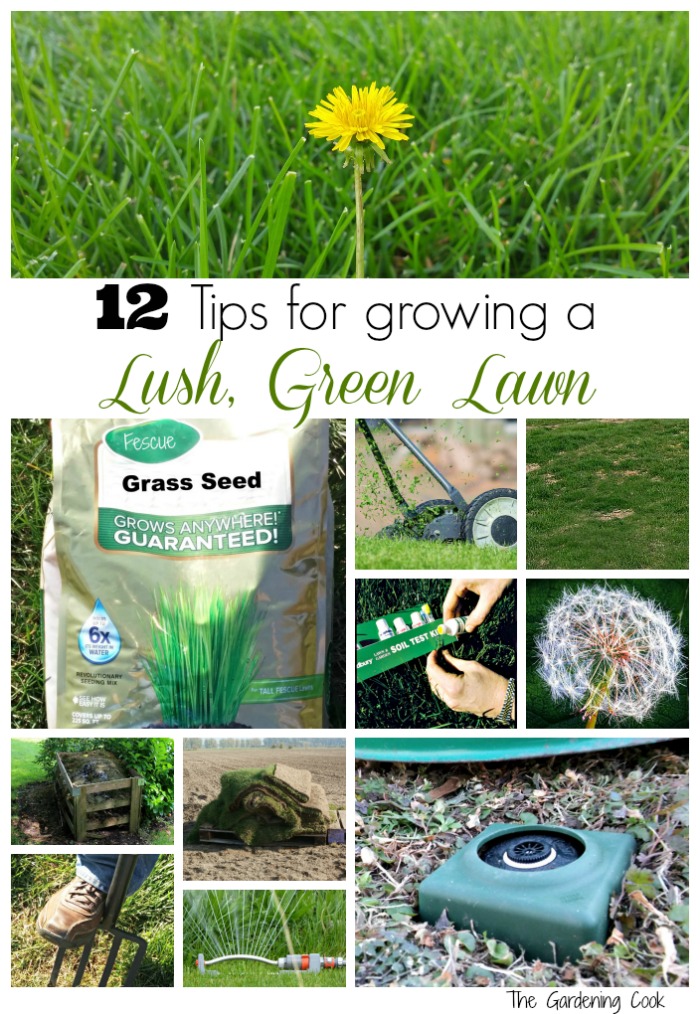
These lawn care tips will make sure that you have a lush green lawn all summer long.
Everyone likes the idea of a lush green lawn. You know the type…Lush, even and perfect for a game of croquet. One that you can walk over in your bare feet with comfort. Is yours that type of lawn? Neither is mine.
hat is where these lawn care tips will help. Put them to use and you may be turning cartwheels on your lawn this summer.
1. Start with the soil
You need to know what the PH of your soil is to make sure that the grass you want growing there will do well. There are soil PH testing kits designed for the home gardener, and many areas also offer testing by the local government.
Here in Raleigh, the North Carolina Department of Agriculture will do this test at a low cost for residents starting the first of April. This may seem like something you can neglect and get away with it, but don’t consider that.
If you do, you could end up throwing money down the drain the grass seed doesn’t grow later. Testing the soil also helps you to purchase just the right nutrients to help your lawn grow well.
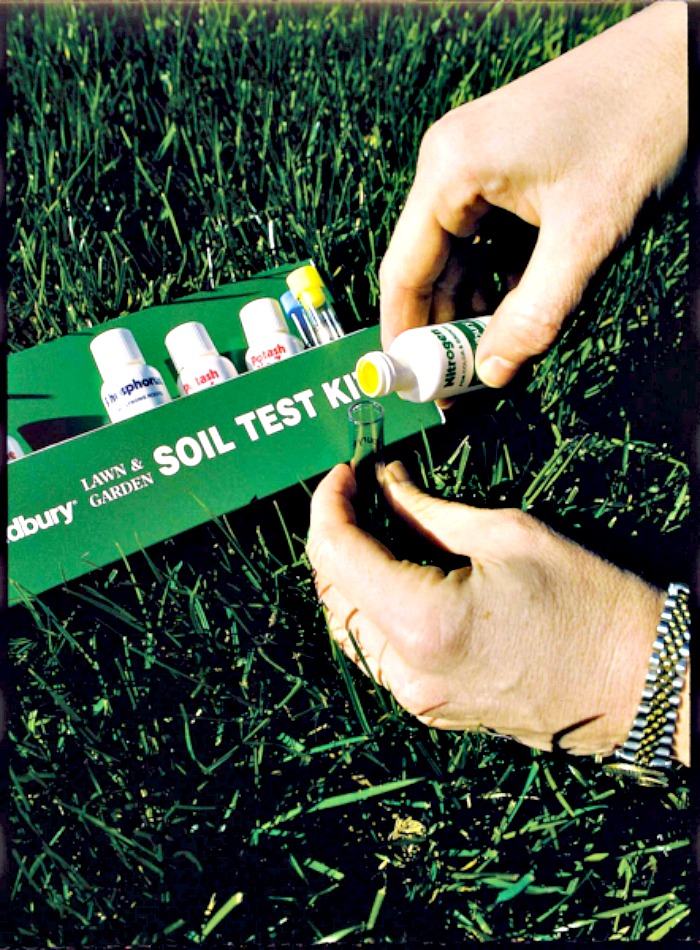
2. Nix the weeds
My lawn is a mixture of clover, crab grass, wild onions and dandelions. Oh, and a few bits of actual grass. So what does that mean for me?
Unfortunately, it could mean digging off the whole top 6 inches or so, and then tilling what is underneath. Or, I could go out there daily with a bucket and a hoe and hand trowel and dig each one up by hand.
Either way, the weeds have to grow. Mowing over them just makes everything LOOK like a lawn, when really it is just well cared for weeds!

3. Timing matters
If you don’t have as many weeds as I do in your lawn, then spot treating can work. Treating broad leaves requires moisture. The best time to apply treatment is early in the morning when there is a heavy dew on the lawn.
You will just waste your money if the grass is not wet. So, don’t even think about doing this in the middle of a hot, dry spell.
Spring and late fall are the best times to treat for weeds.
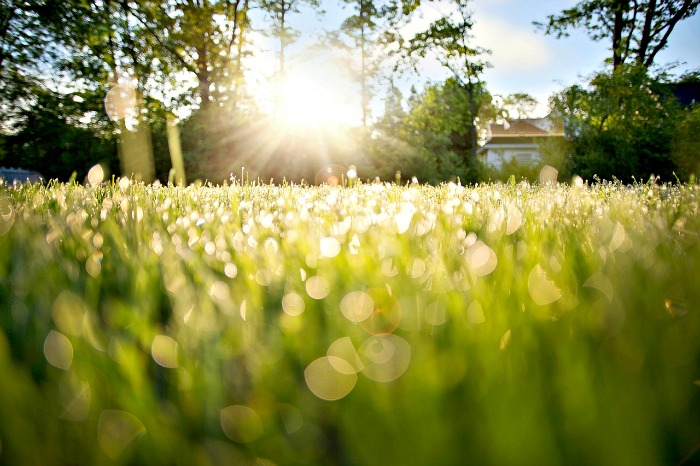
4. Use Weed Preventers
nce you have the weeds in check, consider using a pre emergent weed preventer. These won’t do anything for weeds already growing but will help to keep new ones from taking hold.
Once again timing matters. Treat your lawn this way before weed seeds have germinated. Early spring is the best time.
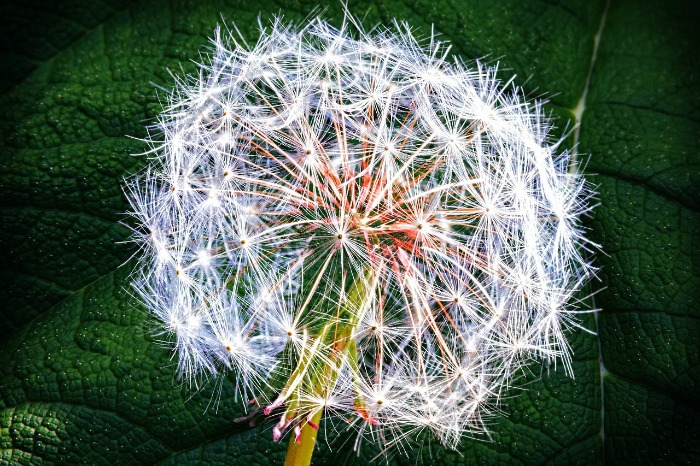
5. Get the right tools
Rakes help with leveling and pitchforks help with aerating. You will need a good lawn mower that is well maintained. String trimmers are good to get nice edges.
If you have sprinklers in your garden, consider investing in some sprinkler head covers. These sturdy covers prevent damage of your expensive sprinkler heads from coming into contact with lawn mowers and weed eaters.
They also prevent sprinkler heads from disappearing into the yard or brush.
6. Fertilize
We all need nourishment to grow in a healthy way, and lawns are no different. The more you feed your lawn, the better it will grow.
Here the timing is during the growing season, so spring and summer is best. And fertilizing does not necessarily mean chemicals.
If you have a compost pile in your yard, you will have the perfect fertilizer that costs nothing but a bit of time.

7. Seed or Sod?
If you have a whole lawn to lay down, or just patches, you will find yourself asking this question. Which is better, seeding or laying sod?
The answer is how much money you have and how quickly you want results. Quick and expensive? Lay sod.
More patient and less money? Seeding is the answer for you. With either method, be sure to research the best lawn type for your area.
For me, this year, it will be grass seed. I have 1/2 acre of lawn area and just can’t afford sod.
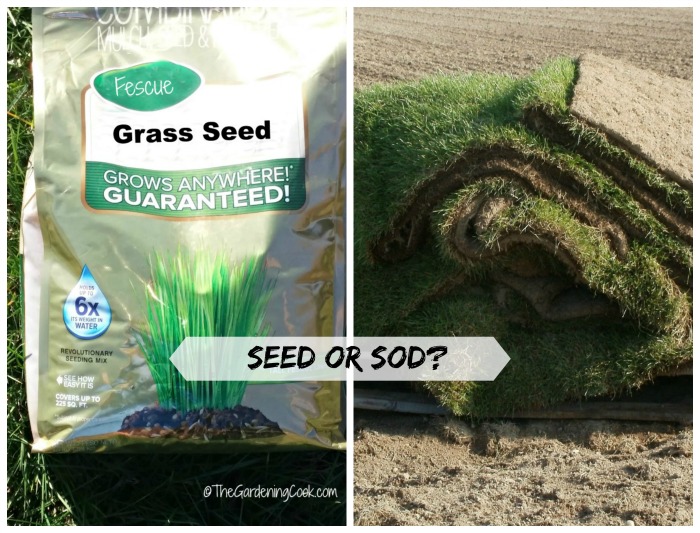
8. Aerating helps
Aerating lawns will loosen the soil and reduce the amount of thatch that builds up. The best time to do this is when the grass is actively growing and the soil is moist.
Spring and fall is best for most lawns, but well watered lawns can also be done in the summer.
This can be done with manually with pitch forks, spiked boots, and other lawn aerating gadgets, as well as with especially designed tools for aerating.

9. Mowing tips
This seems like a no brainer, right? When it needs cutting, mow it! But once again, timing is everything.
Just because the weekend is convenient for you, does not mean that every 7 days is right for the lawn.
During the active growing season, the lawn may need mowing every four or five days.
A rule of thumb is to move just often enough to avoid cutting off more than 1/3 the height of the grass at any one time. Your lawn will thank you.
 10. Watering
10. Watering
This is one of the most important of my lawn care tips. I know that you are probably sick of the word timing by now, but here I go again. Timing matters. Early in the morning is best, just like it is for any garden.
Doing this gives your lawn a chance to get a good drink and the sun, during the day, will dry the grass and make it less likely that the lawn will get diseases of any type. At all costs, avoid night time watering.
Once or twice a week, during the growing season, long enough for the soil to get wet several inches deeps is about right. Avoid daily light watering which encourages shallow roots and thirsty lawns.
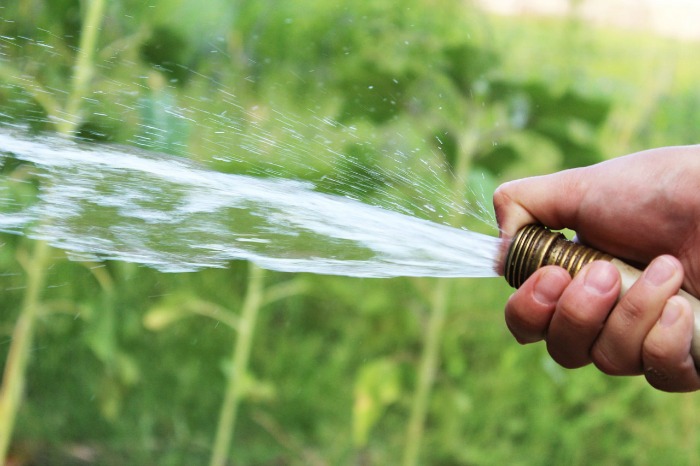
11. Bare spots
If your lawn is one of those lawns that looks “pretty good, with a few bare spots,” don’t rest on your laurels and think the lawn will grow over the bare spots. This is one of my favorite lawn care tips.
Weeds love those bare spots! Have some grass seed on hand to fill them in as they appear and you will help to keep the weeds at bay.

12. Maintenance matters
Keep your lawn mower blades sharp. The grass will cut more cleanly and the lawn won’t have a set back after being cut with dull blades.
Test your irrigation system before you need to put it to use, so that it is working when the hot summer hits.
Whether you have an expensive sprinkler system or just use manual sprinklers, you will want them to be working.

Lush, green and healthy lawns are the perfect location for barbecues, parties and other summer activities. If you follow these 12 lawn care tips, you will be sure to maintain a lawn that is healthy and beautiful all summer long.
Have I forgotten one of your favorite lawn care tips? Please let us know what it is in the comments below.
Yvonne
Tuesday 9th of March 2021
Great article and very well explained. I believe in professionals so this is a very useful article for everyone. Many thanks for your share.
Zoe Campos
Tuesday 10th of November 2020
Thanks for telling me that I need to invest in sprinkler head covers if I were to use it on our lawn. However, our system had been broken for a while now and we haven't used it for months. I guess we should get it repaired if we're aiming to have a better-looking and healthier lawn.
Greta James
Tuesday 9th of June 2020
Thank you for informing me that you should not cut off more than a third of the grass, and it should be mowed about every 4 days. I love the cosmetic look of really green grass, and it is really fun for my kids to play in. However, since the divorce, I have had a really hard time keeping up with the grass. I wonder if there are services that could help me work out a lawn treatment plan.
Adrian Jones
Tuesday 26th of March 2019
I like how you mentioned that taking care of the various 'bare spots' on a lawn have to be covered up and cleaned so that the entire lawn looks cohesive and is one whole. At the same time, periodic maintenance on the garden, in general, helps keep the grass green and inviting, ready to plant more flowers. While I have no experience with fixing up my garden, I can leave everything else to a professional, low-maintenance team so that they can get some work done!
Heidi Bookenstock
Monday 11th of June 2018
The weather is warming up and my lawn is dying in the heat. No matter what I try, every summer my lawn turns a crusty brown color. I really appreciate all the tips in this article, especially about fertilizing, like using a compost pile.
Carol
Monday 11th of June 2018
A lot depends on the type of grass. Some of them just cannot take the heat and go brown in summer no matter what, unless you add a lot of water to the lawn. Carol